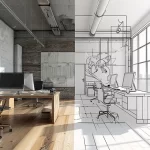Common Mistakes to Avoid in Patent Drawings
- October 4, 2023
- By Sarita Thomas
- Read 2 minutes
Despite their importance, patent illustrations often become the weak link in a patent application due to recurring errors made by inventors. This article aims to spotlight these common mistakes in patent drawings and provide guidance on how to avoid them, ensuring a stronger, clearer patent application.
Omitting Crucial Details
One of the most frequent blunders in patent illustrations is the oversight of essential components or features. It’s akin to narrating a story but missing out on pivotal plot points. For an invention that relies on a series of interconnected parts, the omission of even one element can lead to ambiguity.
Tip: Double-check your drawings against your patent’s textual description. Ensure that every feature mentioned in your description finds its representation in the drawing.
Over-Complicating the Illustration
The mistake of inundating drawings with too much detail is quite common. While it might seem counterintuitive, an overly detailed drawing can cloud an invention’s core essence, leading to confusion.
Tip: Strive for a balance. Your drawings should be comprehensive, but not to the point where they become convoluted. Focus on the invention’s primary features and functions.
Misalignment Between Text and Drawing
In some instances, there exists a discord between the patent’s textual description and its accompanying illustrations. Such inconsistencies can not only sow seeds of doubt in the examiner’s mind but also provide adversaries with ammunition during infringement disputes.
Tip: Regularly cross-reference between your patent’s text and drawings. This iterative process helps ensure consistency and clarity across both mediums.
Ignoring Patent Office Guidelines
Different patent offices across the globe have their unique set of guidelines governing patent drawings. Ignoring these can lead to unnecessary application rejections or revisions.
Tip: Familiarize yourself with the specific guidelines of the patent office you’re applying to. Whether it’s the type of paper, the quality of line drawings, or the acceptable shading techniques, margins, adhere to these stipulations rigorously.
Using Low-Quality Tools or Software
Some inventors resort to rudimentary software to craft their patent drawings. These drawings lack precision, clarity, or the professional touch needed for a patent application.
Not Accounting for Future Modifications
Inventions often undergo iterations and refinements. However, some patent drawings are so rigid that they don’t accommodate potential future modifications, limiting the scope of the patent.
Tip: While your drawing should represent the current state of your invention accurately, it’s wise to factor in potential broad variations or modifications that don’t deviate from the invention’s core concept.
Overlooking the Global Perspective
For inventors eyeing international patents, it’s crucial to remember that what works for one country’s patent office might not necessarily align with another’s.
Tip: If you’re planning to file patents in multiple countries, research each nation’s specific requirements. Consider creating a set of base drawings that can be easily tweaked to meet different national standards.
Patent drawings, while integral to the patent application process, are fraught with potential pitfalls. However, with meticulous attention to detail, a keen understanding of guidelines, and a prudent approach that balances clarity with comprehensiveness, inventors can prepare drawings that are less likely to be rejected.







